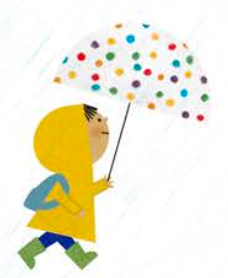Plink.
Invite students to share their poems out loud and listen to all the different sounds that rain can make!
Plop.
So begins my lyrical picture book, A Place for Rain, illustrated by Blanca Goméz. It’s the story of a classroom that plans and builds a rain garden. They collect excess water in barrels, create paths for waterflow with stones and bricks, and plant native flowers and grasses that help the water percolate and invite wildlife to flourish.
Throughout A Place for Rain, I purposefully use onomatopoetic words to echo the different sounds water makes. Consequently, A Place for Rain a great mentor text to teach onomatopoeia to students. Here’s how!
First, define onomatopoeia for your students:
Onomatopoeia is the use of a word that sounds like what it means. For example, the word “buzz” sounds like the noise an insect makes, and it means “to make a low, vibrating humming sound.”
Next, read A Place for Rain out loud. Have students listen for onomatopoetic words. Make a list of the words they find. Some examples include Plink. Plip. Plop. Pitter. Patter. Splutter. Splatter. Drizzle. Roar. Rushing. Gushing. Swarm.
Then, find an online recording of rainfall. Play it for several minutes. As students listen, have them think of and/or write down words that remind them of the sounds they hear. Ask for volunteers to share their onomatopoetic words. Add them to the class list.
Share my Sounds of Rain Template with your class.
Explain that students will be using the class list of onomatopoetic words and another literary device, simile, to write a rain poem. Be sure to define the term simile for your students:
A simile is a comparison of two different things using the words like or as. For example, “The rain roared like a lion.”
Either as a class or individually, have students fill in the Sounds of Rain Template to write their rain poems. You can use this example poem as a model:
Patter.
Splutter.
Splatter.
Rain sounds like
grease in a frying pan sky.
Rush.
Gush.
Swarm.
Rain looks like
a mob of soggy gnats.
Pour.
Roar.
Soak.
Rain feels like
the embrace of an ocean wave.
-by Michelle Schaub


Wonderful! Also, what a great book! :)
ReplyDelete